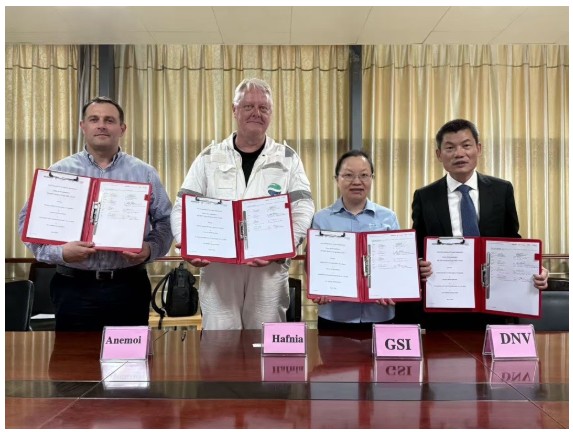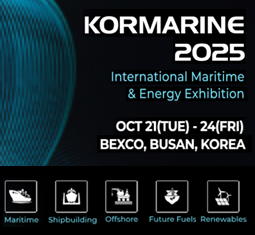Issue Anemoi joins forces with Hafnia, Guangzhou Shipyard International and …
페이지 정보
작성자 최고관리자 댓글 0건 조회 1,061회 작성일 25-05-16 17:26본문
Anemoi joins forces with Hafnia, Guangzhou Shipyard International and DNV to design Rotor Sails for MR tankers

Photo from the signing ceremony, which took place at the GSI offices on 14th May. Left to right: Nick Contopoulos – Chief Production & Partnerships Officer of Anemoi, Jesper Kristiansen – General Manager Technical of Hafnia, Huang Jun – Chief Engineer of GSI and Mr Shao Guang Chi - Station Manager of Guangzhou Station at DNV Maritime
Anemoi Marine Technologies Ltd, an industry leader in wind-assisted propulsion systems, has announced that it is collaborating with Hafnia Limited, Guangzhou Shipyard International (GSI), and DNV to develop the integration design of Rotor Sails suitable for installation on 50,000 dwt Medium-Range (MR) tanker vessels.
The companies signed a Joint Development Project (JDP) in April 2025 to develop a new generation of efficient and environmentally friendly Rotor Sail vessel designs to increase the efficiency of MR tankers within the wider global fleet.
As part of the project, Anemoi and Hafnia will undertake several engineering studies to establish specifications related to how Rotor Sails can be safely and efficiently installed on the deck of MR tankers, alongside additional electrical and control system layouts for these vessels. In addition, the studies will include calculations to examine how Rotor Sails can improve the Energy Efficiency Design Index (EEDI) and Energy Efficiency Existing Ship Index (EEXI) values of existing and future MR tankers.
GSI will apply its naval architecture and marine engineering principles to develop essential technical documentation for the new Rotor Sail’s design integration, while DNV will undertake an Approval in Principle (AiP) assessment to ensure that the design is feasible and verifies that no significant obstacles exist to prevent the design from being realized based on current and foreseeable regulatory and class requirements.
“Participating in this joint development project allows us to collaborate with industry partners to unlock the full potential of Rotor Sails on MR Tankers. It supports Hafnia’s decarbonisation strategy to assess and embrace the potential of innovative technologies to improve fuel efficiency and reduce vessel emissions,” shared Jesper Kristiansen, Hafnia’s General Manager Technical.
“WAPS, like Rotor Sails, are spreading throughout the industry, enabled by new materials, data and software, and evolving rules and regulations. Across all segments, we still have room to improve vessel energy efficiency and WAPS have emerged as one of the most attractive tools for shipping to make immediate, impactful gains in this area. DNV is very pleased to be part of this forward-looking group, and build on a cooperation with Anemoi, Hafnia and GSI that is driving shipping’s journey towards a more sustainable future,” said Mr Shao Guang Chi, Station Manager of Guangzhou Station at DNV Maritime.
“With new regulations driving the need for lower emissions, the time is right to adopt highly efficient ship designs. Integrating Rotor Sails into MR tankers is a necessary step, and together with our partners, we’re committed to delivering vessels that meet both environmental and commercial demands,” said Deputy Chief Engineer, Huang Jun of Guangzhou Shipyard International (GSI).
“There is growing interest within the tanker sector for novel technology that can help reduce the carbon footprint of their vessels and increase their value, particularly as the MR tanker fleet is expected to grow in the coming years. Our partnership with Hafnia, alongside GSI and DNV, will ensure a new generation of MR tankers that utilises Rotor Sails to improve their efficiency and sustainability credentials hits the water in the not-too-distant future,” said Nick Contopoulos, Chief Production and Partnerships Officer of Anemoi.
Rotor Sails, also known as ‘Flettner Rotors’, are vertical cylinders that harness the renewable power of the wind to provide additional forward thrust and improve the energy efficiency of the vessel. This energy saving technology is increasingly being sought after by ship owners and operators as a cost-effective and immediate solution to reduce the carbon emissions and fuel consumption of their vessels, as well as helping meet international emission reduction targets.
■ Contact: Anemoi Marine Technologies www.anemoimarine.com












